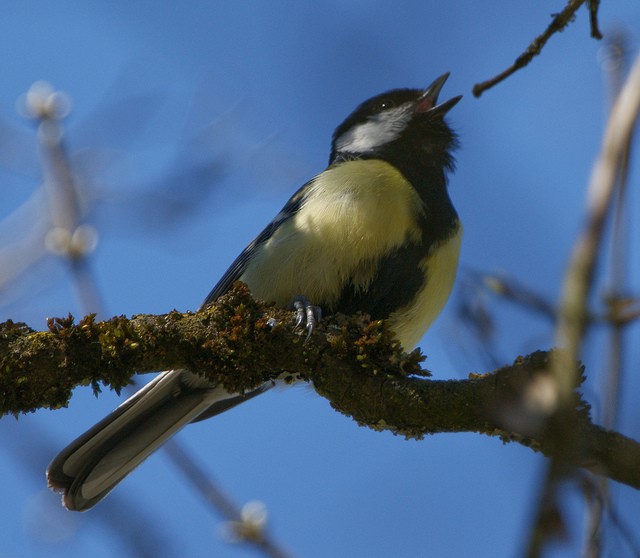News and Views Please subscribe, share, comment!

The role of the flute in the orchestra
Posted in Play: August 2016
All the instruments have their important roles to play in the orchestra. As a principal flautist I`ve decided to write something about the flute and to give also some musical examples from the orchestral repertoire.
The flute is part of the woodwind family including the oboe, bassoon and clarinet, although the modern flute is made of different materials: silver, gold or platinum. We can make an analogy and say that the flute is the equivalent of the first violin, as it often has the melody line and the interventions are always heard because of its specific timbre. The flute’s sonority differs depending on the register. In the lower register the sound is a little dark, melancholic. In the middle register it is soft, velvety and in the top register the sound is bright and penetrating. In the orchestra are 2 to 4 flutes, depending on the size of the orchestra and the repertoire that is played. At least one of the flautists also plays another instrument, piccolo. It is very similar to the flute, but much smaller and with a very acute timbre because it plays the highest notes of all the woodwinds. The piccolo is heard over all the instruments of the orchestra.
The flute solos in orchestral works are written mostly in the middle and acute register. Because of its crystalline timbre, but also because of its virtuosity, the flute is an appropriate instrument to imitate the chirping of birds. There are many composers who have used the sonority of this instrument and wrote beautiful flute solos that remind us of bird song. We can mention a few examples:
In the famous work of Sergei Prokofiev, Peter and the Wolf, the flute solo embodies the bird through a full virtuosity.
In the video linked below, Paula Robinson interprets "Voliers" from Carnival of animals, written by Camille Saint-Saëns. Also this time, the flute is the bird.
At the beginning of third part ( min.18:57 to min.19:52) from the Symphony No. 2 written by Aleksander Scriabin, the flute recites the song of a bird in a colorful and refined solo.
In the 6th Symphony (Pastoral) of Beethoven, at the end of the second movement from min. 10:27 you can hear a conversation between 3 birds: nightingale which is represented by the flute, quail by the oboe and cuckoo by the clarinet.
In 1910, Igor Stravinsky wrote the symphonic suite "Firebird". In Russian mythology, Firebird is a miracle bird, with feathers shining like gold and bright and clear eyes. It appears at midnight and it is said that one of its feathers can light up an entire room. The Firebird always stays young, beautiful and immortal because it eats apples of gold. When it starts singing, pearls fall from her beak and her trill heals the sick and restores sight to the blind ones.
In the Symphonic Suite of Stravinsky, the Firebird is represented by the flute but this time together with the piccolo. From min. 3.30 to min. 4.45 both instruments- flute and piccolo have a solo role and stand out through passages full of virtuosity, but also through their penetrating and brilliant timbre.
All these musical examples highlight an instrument with a very rich palette of sound and color, full of virtuosity, brilliance and refinement: the flute!
Do you know other musical examples where the flute represents the bird? Please share them!
Lidia
16 Aug 2016 10:02
Klaus, thanks for the other musical examples! I don`t know how easy or how naturaly are coming the finest sounds from birds, but I know that the finest sounds are coming out from flute when there is emotion, passion and strong feelings! We can reproduce a bird song, but we can`t imitate the beauty of it without a real emotion! That`s what I believe.
Klaus
15 Aug 2016 14:10
Also the flute part in the trio of the 3rd movement in the "Italian Symphony" (Mendelssohn)? And the big flute solo excerpts in Dvorak´s Cello Concerto. Even if the music does not relate directly to the world of birds, the sad bird will not start to sing his finest sounds like if nothing had happened. Same feeling on playing the flute or other woodwind instrument? Animals do not lie, but human beings....?
Uli Sperling
11 Aug 2016 10:34
I think Scriabin must have listened a lot to birds. He has captured the song of the nightingale so naturally.
Post a comment
Subscribe
All fields denoted by an asterix(*) are required
Lidia
16 Aug 2016 10:09
Uli, the song of the nightingale it sounds so naturally, but in fact is a difficult solo! It requires a very good technique to play it really good! It`s possible that sometimes the things which appear easy or simple, have inside a lot of complexity.